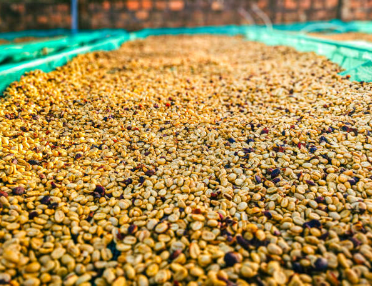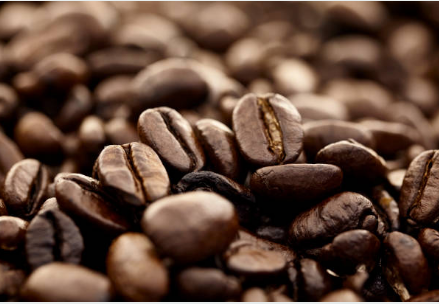Table of Contents
Introduction
Coffee is something beyond a coffee bean; for espresso bean, it’s a rich, strong experience that espresso lovers are in depth for its profundity of flavor and sweet-smelling power. At the heart of great espresso lies one curical ingredient: the espresso beans. Choosing the right espresso beans for coffee can change your espresso routine into an expectional experience.
In this guide, we’ll investigate everything you need to be aware of when choosing the ideal espresso beans for coffee, from understanding bean types to ways to brew the perfect shot.
What makes coffee unique?
Coffee is on the brewing strategy forces hot water through finely ground espresso under high pressure. This process extracts a concentrated shot of espresso, characterized by a thick, golden crema on top. The intensity of coffee relies intensely upon the nature of the espresso beans, grind size, and brewing uniqueness.
Key characteristics of espresso include:
Focus: A small, extraordinary shot of espresso with strong flavor.
Crema: A cremy golden layer framed by the oils and carbon dioxide in the espresso.
Flexibility: Coffee fills in as the base for well-known drinks like lattes, cappuccinos, and macchiatos.
The role of Espresso Beans in Coffee
The quality of your coffee is directly tied to the beans you use. Here’s the reason espresso beans are so basic:
Flavor Profile: Beans with the right equilibrium of pleasantness, causticity, and sharpness yield an agreeable coffee shot.
Freshness: Newly broiled beans improve smell and flavor, while old beans bring about level-tasting coffee.
Roast Level: Coffee typically calls for medium-to-dark roasts for their more full body and reduced acidity.
Types of Espresso Beans: Which is Best for Coffee?
Espresso beans come from two variety assortments, Arabica and Robusta. How about we investigate their parts in coffee?
1. Arabica Beans
Flavor Profile: Sweet, fruity, and nuanced with higher acidity.
Normal Use in Coffee: Liked for single-origin coffee or brewing emphasizing complexity.
Pros: superior flavor quality and smoother taste.
Cons: More expensive and less crema compared with Robusta.
2. Robusta Beans
Flavor Profile: bold, natural, and bitter with a heavier body.
Normal Use in Coffee: Often blended with Arabica for added crema and intesity.
Pros: high caffeine content and rich crema production.
Cons: Less nuanced flavor; can taste unforgiving on the off chance that not blended.
3. Mixes
Coffee blended often Arabica and Robusta to adjust flavor, body, and crema. A typically blended drink could highlight 80% Arabica for pleasantness and intricacy and 20% Robusta for crema and intencity.
The Importance of roast Level for espresso beans
Broiling altogether influences how espresso beans act in coffee fermenting. This is a breakdown of the way broil levels impact coffee:
1. Light Roast

Flavor Notes: Splendid, acidic, and fruity.
Suitability for Espresso: less common; utilized for specialty single-origin shots to feature unique bean qualities.
Challenge: High acidity and a light body might feel unequal in traditional espresso.
2. Medium Roast

Flavor Notes: Adjusted pleasantness, sharpness, and body.
suitability for coffee: ideal for those looking for a blend for brilliance and richness.
Best for: specialty blends or nuanced single origins.
3. Dark roast

Flavor Notes: Bold, rich, with notes of chocolate and caramel.
Suitability for Coffee: A classic choice for a full-bodied, low-acid coffee shot.
Best for: traditional espresso and milk-based drinks.
Single-Origin vs. Blend for Espresso
1. Single-Origin Coffee
Espresso sources from a single region or farm.
Pros: Features special flavors like fruity Ethiopian beans or chocolaty Brazilian beans.
Cons: May lack balance; not always is idial for milk-based drinks.
2. Coffee Mixes
A mix of beans from multiple origins.
Pros: Offers consistency, equilibrium, and flexibility.
Cons: Less opportunity to explore single-origin flavors.
Factors to Consider While Choosing Espresso Beans for Coffee
1. Freshness
Look for beans roasted within the last 2-4 weeks.
Avoid pre-ground espresso; grind beans fresh befor brewing.
2. Grind Size
Coffee requires a fine, reliable drudgery for ideal extraction.
3. Packaging
Choose beans in sealed, resealable packs with a one-way valve to safeguard newness.
4. Flavor Profile
Think about your inclinations: Do you appreciate fruity and brilliant notes or striking and chocolaty flavors?
5. Roaster Reputation
Purchase beans from reputable roasters who have some expertise in coffee mixes.
Brewing the Perfect Shot of Coffee
Here is a step-by-step guide to making the perfect espresso shot:
Set up Your Coffee Machine
Guarantee the machine is spotless and preheated.
Actually look at water quality; sifted water works best.
Grind Your Espresso
Utilize a burr grinder for consistency.
Hold back nothing, marginally dirty surface.
Does the Espresso
Utilize 18-20 grams of espresso for a twofold shot.
Change in view of your coffee machine and taste inclinations.
Tem evenlly
Utilize an alter to apply firm, even pressure.
Abstain from overpacking, as it can ruin a water stream.
Extract the Coffee
Start extraction following packing.
Go for the gold seconds of extraction for a 2-ounce shot.
Taste and Adjust
Try different things with grind size, portion, and extraction time to accomplish your optimal flavor.
Top Espresso Bean Recommendation for Coffee
Here are some well-known espresso beans cherished by coffee fans:
1. Lavazza Super Crema
Mix of Arabica and Robusta.
Flavor Profile: Honey, almond, and dried natural product.
2. Illy Classico Coffee
100 percent Arabica.
Flavor Profile: Offset with notes of caramel and chocolate.
3. Intelligentsia Black Cat Analoge
Specialty mix.
Flavor Profile: Sweet, with traces of cherry and milk chocolate.
4. Stumptown Hair bender
Complex mix of worldwide starting points.
Flavor Profile: Citrusy with a chocolaty completion.
Tips for storing Coffee and Beans
Proper storage preserves the flavor and freshness of your espresso beans.
Use an airtight containr. Get beans far from air, tight, and dampness.
Avoid the freezer: Freezing can cause condensation and flavor loss.
Store in a Cool, Dark Place: A storage space or cabinet works best.
Conclusion:
Choosing the best espresso beans for coffee involves understanding your flavor inclinations, roast levels, and the subtleties of bean types. Whether you’re down to single-origin compacity or the balanced harmony of a mix, the right beans can raise your coffee game.
With quality beans, proper storage, and attention to brewing technique procedures, you can enjoy café-quality coffee in the solace of your home. In this way, explore different avenues regarding various beans, relish the flavors, and make each shot a work of art!

1 thought on “The Ultimate Guide to Choosing the Best Coffee Beans for Espresso bean”